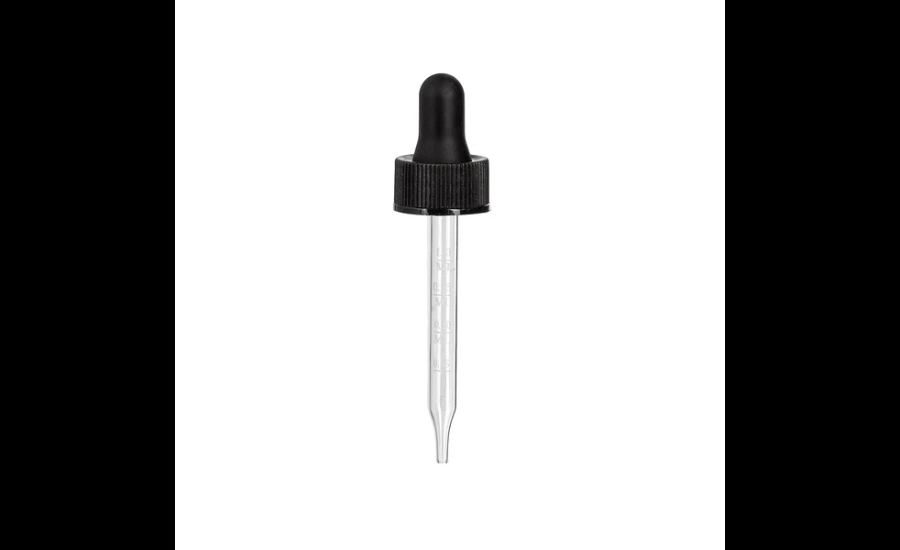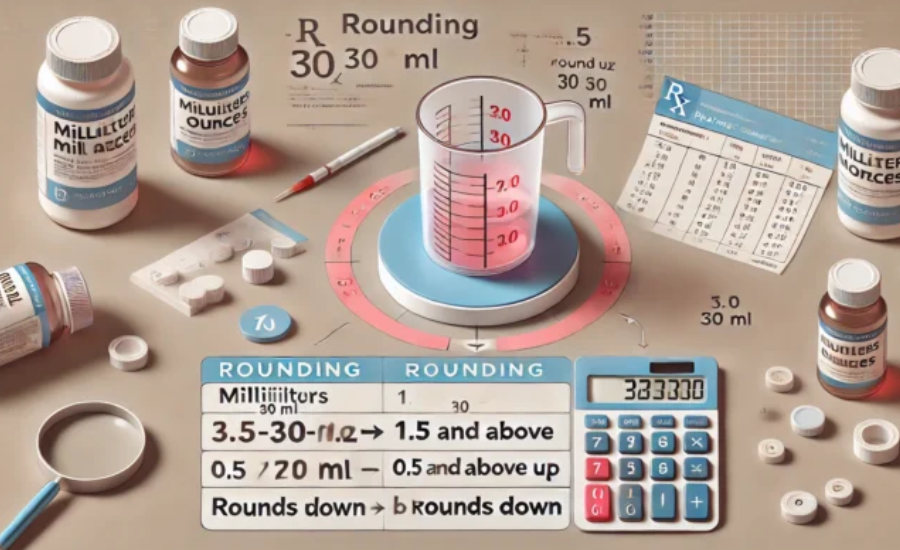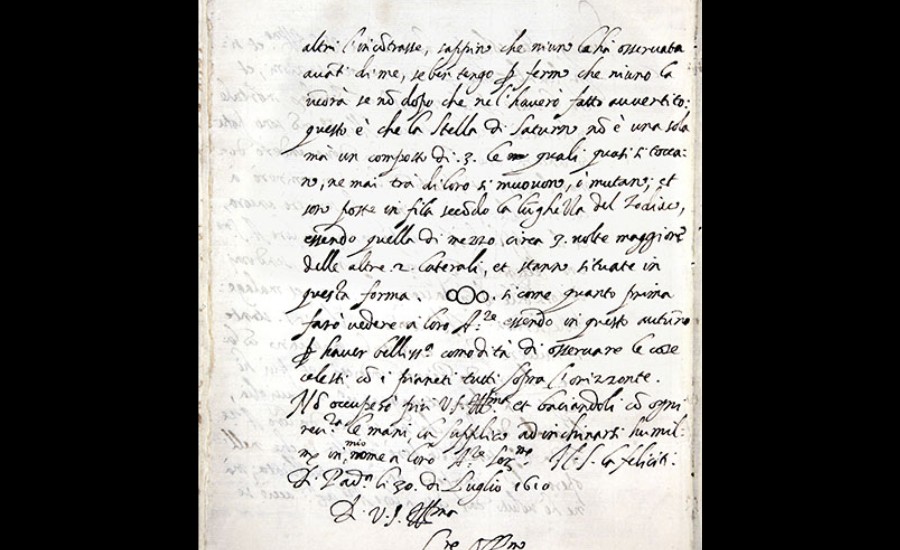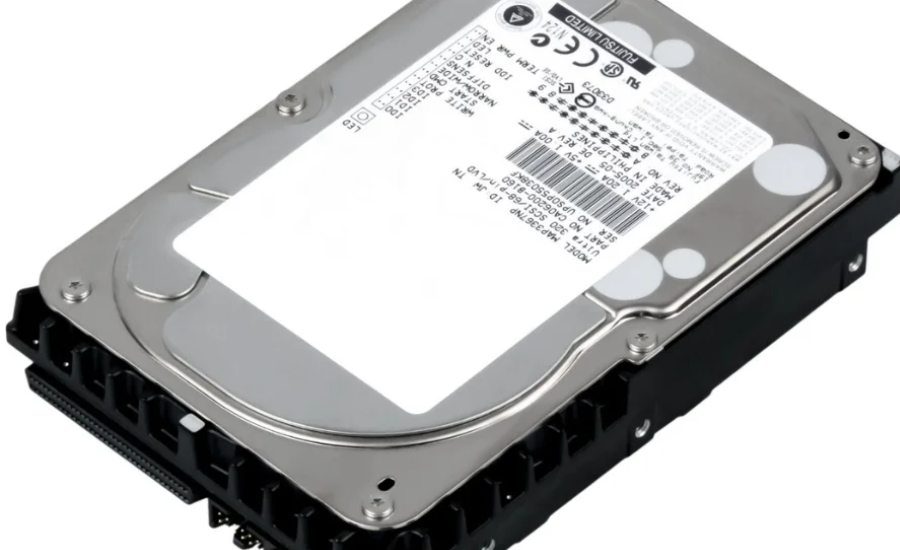Rounding mL in an oz NAPLEX 30 unit conversions are fundamental in pharmacy, particularly when precise medication measurements are necessary. One common conversion pharmacists frequently encounter is between milliliters (mL) and ounces (oz). For those preparing for the NAPLEX, understanding how to round mL during conversions, especially in scenarios like the NAPLEX 30, is crucial. This seemingly straightforward math requires a deep comprehension of when and how to apply rounding rules effectively.
I once assisted a friend in her NAPLEX preparation, and while she had memorized the necessary conversion factors, she struggled with the nuances of rounding. For instance, is it always best to round to the nearest tenth, or are there cases where rounding to the hundredths is more appropriate? In this guide, we will explore these practical considerations, highlighting the significance of precision—not just for acing the exam but also for ensuring safe and effective pharmacy practice.
Understanding the principles of rounding and applying them in real-world scenarios is essential. Precision in dosage calculations directly impacts patient safety and treatment outcomes. Thus, mastering these conversions and rounding practices is invaluable for both exam success and professional competence in the pharmacy field.
Grasping the Concept of rounding ml in an oz naplex 30

To effectively convert milliliters (mL) to ounces (oz) for the NAPLEX 30 exam, it’s essential to grasp the fundamental conversion formula. This level of precision is critical in pharmacy practice, particularly when calculating dosages and preparing medications to comply with regulatory standards.
Rounding plays a vital role in maintaining dosage accuracy. Many pharmacy professionals often use the simplified approximation of 30 mL per ounce for quick calculations, especially during busy shifts or exams. While this can be a handy shortcut, it’s crucial to remember the exact conversion for optimal precision.
Being aware of how rounding can subtly affect medication dosing is essential, especially in patient care. Regularly practicing this conversion will not only sharpen your skills but also boost your confidence, whether you’re facing the exam or engaging in real-world pharmacy scenarios.
The Importance of Rounding in Pharmacy Calculations
Rounding is a common challenge in pharmaceutical calculations, yet it is crucial for maintaining accuracy and ensuring patient safety. The general guideline is simple: round up if the number is halfway or greater than the next whole number, and round down if it is less. This principle is not merely a procedural formality; it plays a significant role in preventing dosing errors that can lead to serious complications, such as incorrect IV drip rates or inaccurate liquid medication dosages.
When applying the precise conversion factor (75 ÷ 29.5735), the result is approximately 2.54 oz. If rounding to the nearest tenth, this translates to 2.5 oz. However, if a physician prescribes 2.6 oz, it’s critical to recognize that simply estimating the difference isn’t adequate. A thorough understanding and application of accurate measurements are essential, as persistent rounding errors can lead to significant challenges in patient care.
While rounding may appear trivial, mastering this skill is vital for pharmacy professionals. It can profoundly impact clinical practice, underscoring the importance of diligence and precision in every calculation.
Ensuring Medication Dose Accuracy
Accurate medication dosing is vital for safeguarding patient health and optimizing treatment outcomes. Even minor variations in dosage can significantly affect a patient’s well-being; taking too much or too little can lead to adverse side effects or prevent the medication from delivering its intended therapeutic effects.
Pharmacists play a critical role in maintaining dosing accuracy. They must carefully consider various patient-specific factors, including age, weight, and medical history, to ensure the correct dose of medication is administered.
Moreover, precise dosing fosters patient trust and enhances adherence to treatment plans. Patients rely on their medications to work as intended, so any discrepancies in dosage can undermine their confidence in the therapy. By prioritizing accuracy, pharmacists help create a reliable healthcare environment that supports patient well-being and treatment success.
Balancing Manual Skills and Digital Tools in Pharmacy
Developing manual conversion skills is essential for pharmacists, but leveraging digital tools can greatly improve efficiency in fast-paced settings. Many pharmacists utilize applications that facilitate quick conversions between milliliters (mL) and ounces (oz), helping to streamline their workflow. However, during the NAPLEX exam, where the use of digital devices is prohibited, it becomes crucial to memorize key conversion factors.
For example, knowing that 30 mL is roughly equivalent to 1 oz enables pharmacists to perform rapid mental conversions, making calculations more efficient during exams and in everyday practice. By integrating manual skills with a solid grasp of common equivalents, pharmacists can enhance their accuracy and confidence in medication management, ensuring optimal patient care.
The Critical Nature of Accurate Dosage Conversions
While converting milliliters (mL) to ounces (oz) may seem straightforward, it becomes particularly vital when working with sensitive populations, such as children and the elderly. These groups often require precise dosing due to their unique physiological responses to medications.
For example, pediatric medications are generally prescribed in small, exact amounts. I recall a situation where a pharmacist inaccurately estimated a pediatric dosage, rounding off by 0.1 oz. Although this error did not pose an immediate risk to the child’s life, it highlighted the importance of accuracy, as even minor discrepancies can have significant consequences for young patients.
The stakes are especially high for both older adults and children, as their bodies can react differently to medications. Ensuring precise dosing is essential for maintaining safety and effectiveness. Healthcare professionals must remain vigilant and thorough when converting dosages to protect these vulnerable populations.
The Importance of Rounding in Medication Dosing

Rounding milliliters (mL) to ounces (oz) is crucial for ensuring accurate prescription dosing in pharmacy practice. Even minor discrepancies in conversions can significantly affect patient care and treatment outcomes.
By employing precise rounding techniques, pharmacists can mitigate the risks of patients experiencing either overdoses or underdoses, maintaining dosages within safe and effective ranges. This accuracy is essential for maximizing therapeutic benefits and safeguarding patient health.
Moreover, adopting standardized rounding practices enhances communication among healthcare professionals. When the entire team adheres to the same rounding protocols, it minimizes confusion during the prescription filling and administration processes.
Consistent rounding not only builds confidence among pharmacy staff but also streamlines workflows. This dedication to precision upholds high-quality standards in medication dispensing, ultimately leading to better health outcomes for patients who rely on accurate dosing of their medications.
Avoiding Common Errors in Unit Conversions
Unit conversions can be tricky, and errors often arise, particularly when rounding calculations prematurely. For instance, rounding up too early while converting milliliters (mL) to ounces (oz) can lead to significant inaccuracies. To achieve optimal precision, it’s advisable to complete the entire calculation before applying any rounding, reserving this step for the final stages of the process.
Another common pitfall involves misremembering the precise conversion factor. The exact figure of 29.5735 can be challenging to recall, especially in fast-paced environments. While approximating, such as rounding 30 mL to 1 oz, can expedite calculations, it’s crucial to revert to the exact conversion ratio when precision is paramount. Striking the right balance between accuracy and efficiency is essential for effective unit conversions in pharmacy practice.
The Critical Need for Precision in Medication Dosing
Converting milliliters (mL) to ounces (oz) may seem simple, but the stakes rise significantly when it comes to certain populations, such as children and the elderly. These groups often require more precise dosing because their bodies metabolize medications differently.
In pediatric care, medications are usually prescribed in small, exact quantities. I recall a case where a pharmacist miscalculated a pediatric dose while converting from mL to oz, rounding incorrectly by 0.1 oz. Although the child received slightly more than needed, which was not life-threatening, it highlighted the potential for adverse side effects. This underscores the importance of precision, particularly for individuals who are more sensitive to changes in medication dosage.
Maintaining Accuracy in Unit Conversions
A frequent error in unit conversions is rounding too soon in the calculation process. For example, when converting from milliliters (mL) to ounces (oz), rounding before completing the full calculation can lead to significant inaccuracies. To achieve the highest level of precision, it is advisable to perform the entire calculation first and reserve rounding for the final step.
Another challenge is misremembering the conversion factor. The precise value of 29.5735 can be difficult to recall, especially in fast-paced situations. While using approximations, such as treating 30 mL as 1 oz, may be helpful for quick calculations, it’s essential to return to the exact figure for tasks that require precision. Striking the right balance between speed and accuracy is crucial in effective unit conversion practices.
Practical Experience in Rounding Conversions
While engaging in practice problems is essential for reinforcing your understanding, gaining real-world experience is invaluable for mastering the rounding of milliliters (mL) to ounces (oz) in the context of the NAPLEX 30. Whether you’re in a hospital or a retail pharmacy, each opportunity to apply these conversions enhances your skills. During my tenure at a local pharmacy, I observed how frequently these conversions arise in everyday tasks. From medication syrups and topical creams to IV solutions, quick and accurate conversions are crucial, as even minor mistakes can impact patient outcomes.
In the exam environment, it’s not solely about answering questions correctly; effective time management is equally critical. A friend of mine, who performed exceptionally well in practice tests, faced challenges during the actual NAPLEX because she spent too much time verifying straightforward conversions. Striking the right balance between speed and accuracy is vital, as mastering this skill can be the difference between passing and failing.
Enhancing Skills with Technology and Study Guides

In addition to manual calculations, various applications can significantly enhance your daily practice. Tools like MedCalc and PharmCalc allow for quick conversions from milliliters (mL) to ounces (oz) with just a tap. However, it’s crucial not to rely too heavily on these apps while preparing for the NAPLEX, as they are not permitted in the exam setting. Developing the ability to perform mental conversions is an essential skill that you must cultivate. Furthermore, using these applications during your study sessions can help you become accustomed to verifying your results, instilling a practice that will benefit you later on.
Study resources such as RxPrep or Kaplan specifically target pharmaceutical calculations, presenting problems that mirror real exam scenarios. The more you practice, the more instinctive these conversions will become. Ultimately, honing your skills through repetition will enhance your performance, especially in high-pressure situations like the NAPLEX.
Also Read: Snepi Injection LA
Final Words
Mastering the conversion of milliliters (mL) to ounces (oz) is essential for success in the NAPLEX 30, particularly when it comes to rounding. Understanding when and how to apply rounding rules can significantly impact dosage accuracy, which is vital for patient safety. For instance, knowing that one ounce is approximately 29.57 mL allows for precise conversions, yet many pharmacists often simplify this to 30 mL per ounce for convenience. However, it’s crucial to avoid premature rounding during calculations to maintain accuracy. Utilizing study resources like RxPrep or Kaplan can further enhance your skills, providing practice problems that simulate exam conditions. Ultimately, mastering the nuances of rounding mL to oz is not only beneficial for passing the NAPLEX but also critical for ensuring safe and effective pharmacy practice. Emphasizing precision in every conversion solidifies your competence as a future pharmacist.
Stay in the loop for upcoming updates and alerts! Insight Rays



